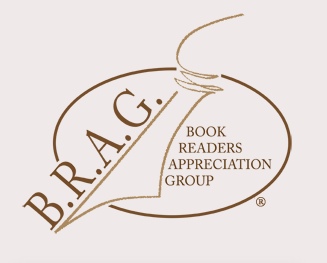 I’m delighted to welcome Annie Whitehead to the blog to talk about being in Exile. She’s a prize-winning writer, historian, and elected Fellow of the Royal Historical Society, and has written four award-winning novels set in ‘Anglo-Saxon’ Mercia, including To Be A Queen, the story of Æthelflæd, Lady of the Mercians. I’m delighted to welcome Annie Whitehead to the blog to talk about being in Exile. She’s a prize-winning writer, historian, and elected Fellow of the Royal Historical Society, and has written four award-winning novels set in ‘Anglo-Saxon’ Mercia, including To Be A Queen, the story of Æthelflæd, Lady of the Mercians.
She’s contributed to fiction and nonfiction anthologies and written for various magazines and was the winner of the inaugural Historical Writers’ Association/Dorothy Dunnett Prize 2017 and is now a judge for that same competition. Among her credits are as judge for the Historical Novel Society Short Story Competition, twice a prize winner in the Mail on Sunday Novel Writing Competition, First Prize in the 2012 New Writer Magazine’s Prose and Poetry Competition. She’s also been a finalist in the Tom Howard Prize for non-fiction, and shortlisted for the Exeter Story Prize and Trisha Ashley Award 2021.
Her nonfiction books, Mercia: The Rise and Fall of a Kingdom and Women of Power in Anglo-Saxon England, are published by Amberley Books and Pen & Sword Books. Added to her recent rcontribution to a new history of English monarchs, published by Hodder & Stoughton in 2023, she’s currently writing a book on Murder in Anglo-Saxon England, to be published by Amberley in 2024.
Annie is the first of my author guests who are fellow contributors to the recently released Historical Stories of Exile. She knows a thing or two about the Anglo-Saxon period in England! Let yourself be entranced by romance, the force of history, heartache and exile.
The world of the Anglo-Saxons is probably less familiar than some periods of history, though The Last Kingdom has helped to popularise it. Even those who don’t know much about the period will have heard of 1066, and we all know that in that year Anglo-Saxon England became Anglo-Norman. We also know the key players: Harald Hardrada of Norway, William of Normandy, Harold Godwineson of England – and poor Edith Swanneck, who identified Harold’s body after the battle of Hastings.
Harold and Edith’s tale is romantic, poignant, heart-wrenching. She was, seemingly, his soulmate, his handfast woman, and she alone, apparently, could identify him because of secret markings on his body that only she was familiar with.
Yet she was not his wife. That title belonged to another woman, another Edith (actually Edith Swanneck’s name wasn’t Edith, it was Eadgifu, but let’s not complicate matters!) but Edith in Old English is spelled Ealdgyth, and that’s the name I’ve gone with in my story about her for ‘Exile’.
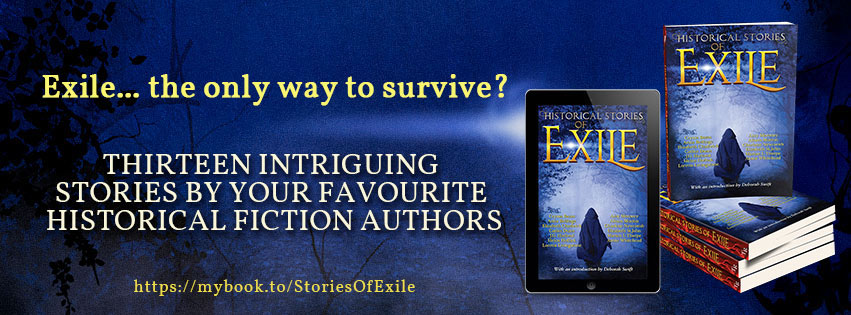
1066 might be the one date that sticks in everyone’s mind, but Lady Godiva is surely the one figure from Anglo-Saxon history whom everyone has heard of. She might not have ridden naked through the streets of Coventry as per the legend, but she was certainly a real person. Rich, famous, and influential, she was part of a huge family with political power in the Midlands, a family which included King Cnut’s first wife, Ælfgifu of Northampton, who ruled Norway on behalf of their son. The family’s matriarch was taken hostage by the Vikings and is one of the few women named in the Anglo-Saxon Chronicles. She was called Wulfrun, and the city of Wolverhampton is named after her.
Ealdgyth was Godiva’s granddaughter, and she became a queen twice over. But for a quirk of fate, our monarchy would be descended from her, and yet she is all but forgotten. I’ve written about her before, in our anthology 1066 Turned Upside Down and my research into her life is ongoing.
What is it about the women of history, and this period particularly, that makes them so seemingly forgettable, unworthy of mention by most of the chroniclers, unless it is to denounce them, or place them at the heart of salacious tales? My last nonfiction book was Women of power in Anglo-Saxon England and my research revealed many women who were influential, held positions of power and often ruled kingdoms as regents. One even ruled one in her own right and, again, The Last Kingdom has done much to bring her story into the light: Æthelflæd, Lady of the Mercians. It was the women who founded the first monasteries, one even educating five future bishops.
One thing that stands out though, is that, although they were vastly privileged, even the elite were not immune to tragedy. We’re told that a number of Alfred the Great’s children died before they reached maturity, and who would argue that his and his wife’s suffering was any less great than that of modern couples losing their child/ren? We are also told of women who travelled great distances, leaving their homes, families and loved ones to marry kings who lived hundreds of miles away.
A journey from Kent to Bamburgh in Northumberland would take over seven hours by car. How long must it have taken the women of the royal house of Kent to journey there to marry the kings of Northumbria, and how did they feel as they set out, knowing that in all likelihood they would never see their homes, or families again? I could have chosen any one of these women to write about for our Exile collection. Their stories are filled with loss, hope, longing, and survival.
I had already written my story about Ealdgyth, for a different project (which Helen Hollick explains in her afterword, talking about how Exile came about) but the reason I chose her for my subject was simply that she intrigues me. There is much that remains unknown about her – ironic given her status as a queen twice over – and I picture her as a resilient, resourceful woman. She endured a great deal, and the emotions provoked will, I hope, resonate with a modern audience.
She was, as I mentioned, part of an extended family whose women showed remarkable courage, leadership, and endurance. I cast her in the same mould. I have walked in some of her footsteps, having visited two of the locations in the story: Chester, and Rhuddlan in North Wales. Whilst I covet Ealdgyth’s colourful Anglo-Saxon clothes and frankly gorgeous jewellery, I can only be thankful that I’ve not walked metaphorically in her footsteps, nor those of any of the intrepid women of the era.
_________
Connect with Annie
Website :https://anniewhiteheadauthor.co.uk/
Blog: https://anniewhitehead2.blogspot.com/
Twitter/X: https://twitter.com/AnnieWHistory
Facebook: https://www.facebook.com/anniewhiteheadauthor/
Instagram: https://www.instagram.com/anniewhiteheadauthor/
BlueSky: https://bsky.app/profile/anniehistory.bsky.social
_________
Two wonderful books by Annie:
Women of Power in Anglo-Saxon England (Non-fiction)
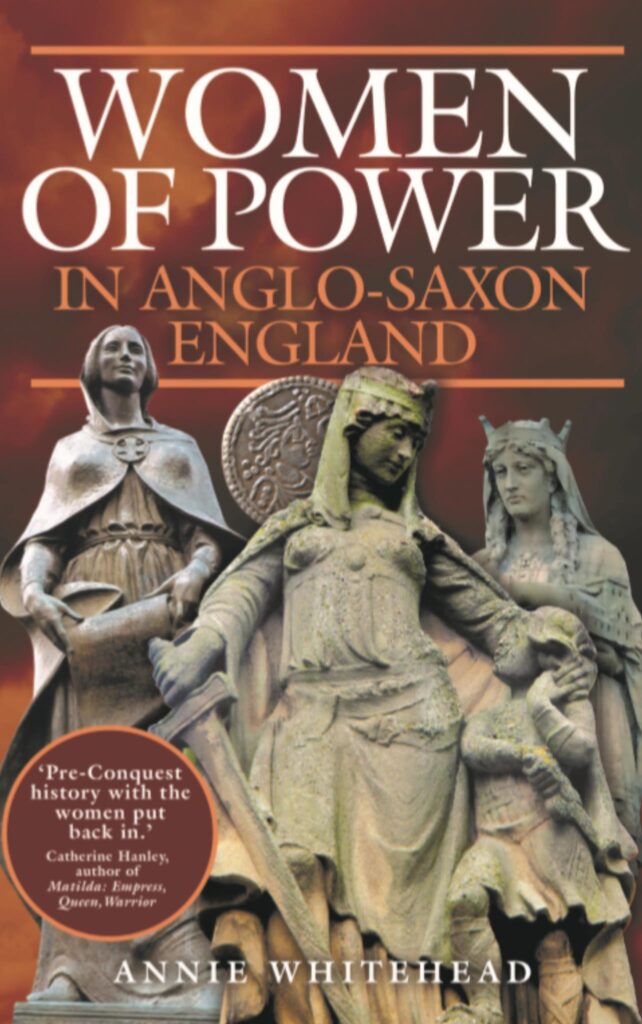 Many Anglo-Saxon kings are familiar. Æthelred the Unready is one, yet less is written of his wife, who was consort of two kings and championed one of her sons over the others, or his mother who was an anointed queen and powerful regent, but was also accused of witchcraft and regicide. A royal abbess educated five bishops and was instrumental in deciding the date of Easter; another took on the might of Canterbury and Rome and was accused by the monks of fratricide. Many Anglo-Saxon kings are familiar. Æthelred the Unready is one, yet less is written of his wife, who was consort of two kings and championed one of her sons over the others, or his mother who was an anointed queen and powerful regent, but was also accused of witchcraft and regicide. A royal abbess educated five bishops and was instrumental in deciding the date of Easter; another took on the might of Canterbury and Rome and was accused by the monks of fratricide.
Anglo-Saxon women were prized for their bloodlines – one had such rich blood that it sparked a war – and one was appointed regent of a foreign country. Royal mothers wielded power; Eadgifu, wife of Edward the Elder, maintained a position of authority during the reigns of both her sons. Æthelflaed, Lady of the Mercians, was a queen in all but name, while few have heard of Queen Seaxburh, who ruled Wessex, or Queen Cynethryth, who issued her own coinage. She, too, was accused of murder, but was also, like many of the royal women, literate and highly-educated.
From seventh-century Northumbria to eleventh-century Wessex and making extensive use of primary sources, Women of Power in Anglo-Saxon England examines the lives of individual women in a way that has often been done for the Anglo-Saxon men but not for their wives, sisters, mothers and daughters. It tells their stories: those who ruled and schemed, the peace-weavers and the warrior women, the saints and the sinners. It explores, and restores, their reputations.
Available to buy here: https://mybook.to/WomeninPower
To Be A Queen (Historical fiction)
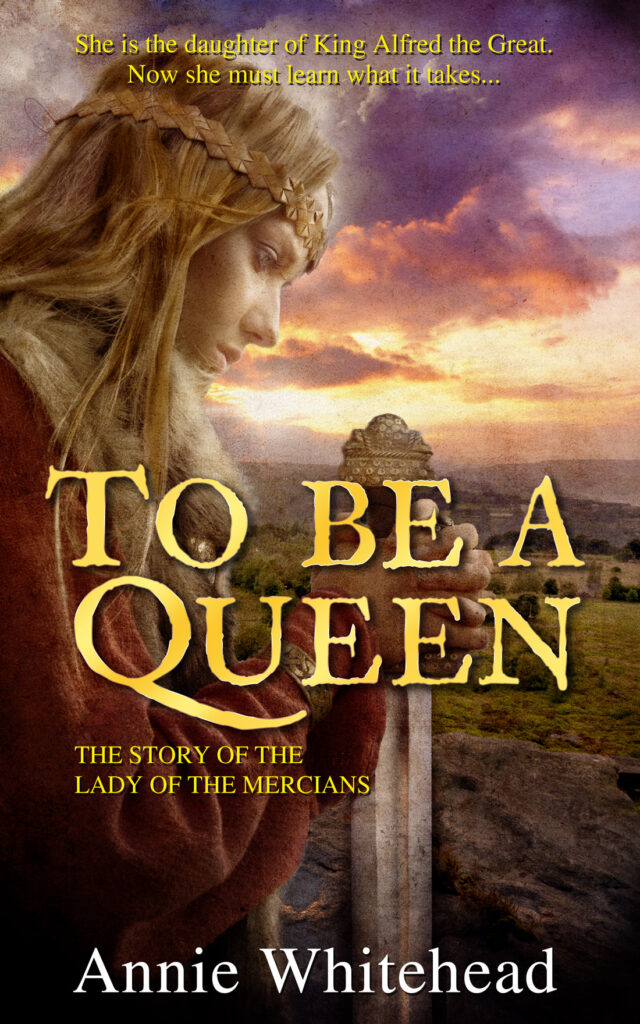 One family, two kingdoms, one common enemy … One family, two kingdoms, one common enemy …
This is the true story of Æthelflæd, the ‘Lady of the Mercians’, daughter of Alfred the Great. She was the only female leader of an Anglo-Saxon kingdom.
Born into the royal house of Wessex at the height of the Viking wars, she is sent to her aunt in Mercia as a foster-child, only to return home when the Vikings overrun Mercia. In Wessex, she witnesses another Viking attack and this compounds her fear of the enemy.
She falls in love with a Mercian lord but is heartbroken to be given as bride to the ruler of Mercia to seal the alliance between the two Anglo-Saxon kingdoms.
She must learn to subjugate her feelings for her first love, overcome her indifference to her husband and win the hearts of the Mercians who despise her as a foreigner and twice make an attempt on her life.
When her husband falls ill and is incapacitated, she has to learn to rule and lead an army in his stead. Eventually she must fight to save her adopted Mercia from the Vikings and, ultimately, her own brother.
To Be A Queen was Long-listed for HNS Indie Book of the Year 2016 and has been awarded an indieBRAG Gold Medallion.
Available to buy here: https://mybook.to/To-Be-A-Queen
Alison Morton is the author of Roma Nova thrillers – INCEPTIO, CARINA (novella), PERFIDITAS, SUCCESSIO, AURELIA, NEXUS (novella), INSURRECTIO and RETALIO, and ROMA NOVA EXTRA, a collection of short stories. Audiobooks are available for four of the series. Double Identity, a contemporary conspiracy, starts a new series of thrillers. JULIA PRIMA, Roma Nova story set in the late 4th century, starts the Foundation stories. The sequel, EXSILIUM, will be out in January 2024.
Find out more about Roma Nova, its origins, stories and heroines and taste world the latest contemporary thriller Double Identity… Download ‘Welcome to Alison Morton’s Thriller Worlds’, a FREE eBook, as a thank you gift when you sign up to Alison’s monthly email update. You’ll also be among the first to know about news and book progress before everybody else, and take part in giveaways.
If you enjoyed this post, do share it with your friends!Like this:Like Loading...
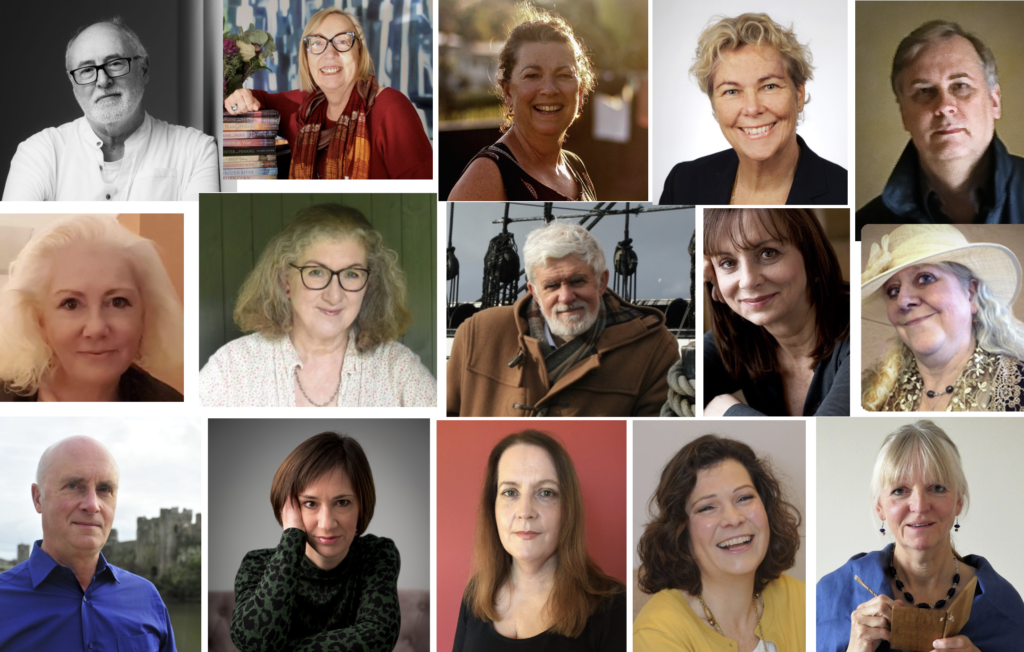 Top row: David Penny, Clare Flynn, Liza Pratt, Anna Belfrage, Keith Dixon. Middle row: J J Marsh, Debbie Young, Antoine Banner, Elizabeth Buchan, Helen Hollick. Bottom row: Tony Riches, Jane Davis, E M Powell, Susan Grossey, Ruth Downie I like having guests on my writing blog. Unlike my thriller blog which is all about my books, their background and research, this writing blog is a warm, relaxing and random place where I and my guests can ramble on about writing and the writing life.
Many of the posts here are based on my experience over the past twelve years of writing seriously (and commercially), but a fair number feature guests. Although writing is solitary, getting your book out there is not – it’s teamwork.
Writers are lovely people – collaborative, knowledgeable, vastly experienced and with a GSOH. Without that humour, you’d be crying. Trust me on that.
But apart from all this warmth and togetherness, what are the harder reasons for hosting guests?
Brand awareness. Hosting engaging guest posts can establish a blog as worth reading. People will associate it with interesting content and expertise from a wide range of talent which means meaning they’ll (hopefully) think of you, not others.
Fresh content. Sometimes blogs can get a little repetitive and stale. (The fear felt by long-term bloggers like yours truly!) Bringing in guest bloggers introduces new, diverse content with different perspectives and styles. Of course, it must be relevant, hence lots of other writers and associated creative people on this blog.
Giving readers reliable information. I like to be viewed as somebody who knows one or two things about writing and publishing, as a possible source of information. I don’t think it’s an ego thing – more a case of giving back to others as a counterpoint to the help I received as a newbie author. But as I share knowledge beyond my own expertise, it may also give readers another reason to remain a subscriber. 😉
SEO. (No, I don’t really understand it either, but it seems to help.). Guest blogs can be a great way to boost Search Engine Optimisation and search engine rankings. By including good keywords and links, a site may be found by more potential readers. Page views and click-throughs go up.
Mutual back-scratching. Posting on other people’s blogs lifts both host’s and guest’s visibility and increases the sense of helping each other’s careers. (Possibly an ego thing…) Additionally, most guests can’t resist the temptation to promote their guest posts. It makes them look good. They can post to social media and run an announcement on their own blog.
Practical stuff
Pitches and invitations. Generally, I don’t accept pitches except from authors I know or know about. We all get the crypto-currency, gold investment and sunglasses sellers pitching and they go straight in the bin.
I invite people who I think will provide something interesting, informative and/or fun related to books, writing and the writing life in the widest sense. I don’t accept sales posts or disguised sales posts, but I always post the author’s latest book at the end with a link. Click-bait is deeply discouraged.
Ah, links. Yes, a few general links to social media are fine, but not every single one to every retail site in the universe.
Tone and style. Guests should write coherently – not over-academically, but not unintelligibly either. I will correct punctuation, but not alter how and why they are saying something – it’s their post, after all!
Add 0ns. Apart from their piece, I post a bit of bio (I like to know how they tick and what they’ve done.), the blurb for their latest book, and photos – them, their cover, landscapes, artefacts, costumes, coins, maps, etc. My readers like pictures…
What’s coming in the next few weeks?
You may have noticed a book called Historical Stories of Exile has just been published. I contributed a story, ‘My Sister’ to it, a side story to EXSILIUM, a Roma Nova Foundation story set in AD 395. I invited the other contributing authors to write a guest post about the background to their story, but not a sales-y piece. I wanted to get behind the story and their motivation for writing it.
I hope you’ll be as fascinated by their posts as I am!
Alison Morton is the author of Roma Nova thrillers – INCEPTIO, CARINA (novella), PERFIDITAS, SUCCESSIO, AURELIA, NEXUS (novella), INSURRECTIO and RETALIO, and ROMA NOVA EXTRA, a collection of short stories. Audiobooks are available for four of the series. Double Identity, a contemporary conspiracy, starts a new series of thrillers. JULIA PRIMA, Roma Nova story set in the late 4th century, starts the Foundation stories. The sequel, EXSILIUM, will be out in February 2024.
Find out more about Roma Nova, its origins, stories and heroines and taste world the latest contemporary thriller Double Identity… Download ‘Welcome to Alison Morton’s Thriller Worlds’, a FREE eBook, as a thank you gift when you sign up to Alison’s monthly email update. You’ll also be among the first to know about news and book progress before everybody else, and take part in giveaways.
If you enjoyed this post, do share it with your friends!Like this:Like Loading...

After a well-deserved lie-in or even a day off, I gird up, send the draft to my Kindle and read it through without interruption (apart from comfort breaks, food and sleep).
I jot down quick notes or chapter references and then motor on. This way, I get the flavour of the book and find out if it works as a complete story.
Doing this when the first draft is fresh in my mind has saved me hours of wasted writing time because any large faults leap out and hit me between the eyes.
The objective here is to ensure that the story hangs together as a narrative. This is the time to sort out any structure problems and whether your story has pace and whether the characters get from A to B.
Next, I print the whole thing out in 1.5 line space. Lover of my Kindle that I am, I know I spot more little horrors on paper. One thing I particularly check is each character’s individual time line. I use the back of previous printouts as if lessens the ecological impact (and saves money).
Next, I settle down to remedying the bumpy bits. Perhaps some places need a linking scene, or a couple of lines of description. I visualise each scene in my head and remind myself that readers need me to show them where the characters are and why they are there. The other danger with a book in a series is that not all readers will have read the previous ones. So this is the time to make sure necessary bits of backstory have been dripped in so the scenes are set properly but without unloading one word more on the reader than is necessary.
- Check your printout is complete – printers can miss a page!
- Go back and do the research the fine points – somebody will take great delight in pointing out a certain vegetable or fabric wasn’t known at the time of your story.
- Check the eye and hair colours and the height and build of your characters are consistent.
- Make sure a character doesn’t know something before they’ve been told/found it out.
- Make sure you don’t have it snowing in June in the northern hemisphere.
- Fill in, yes add, description/narrative/dialogue where you skimmed over it and where it’s necessary.
- Check your author voice is consistent and that characters use the correct register in their speech – are they educated/illiterate/speak a variant/use technical vocabulary/ have a warm and friendly personality / speak in a clipped voice?
- Substitute dynamic, strong and specific verbs for boring or general ones and turn passive sentences into active ones.
- Examine every ‘very’, ‘then’, ‘mostly’, ‘quite’, ‘really’, ‘nearly’, etc. Most can be deleted. The only exception is in dialogue. And cast a stern eye over adjectives while you’re there. Do they enhance or pad?
- Make every sentence a true gem – no clunkiness, no gratuitous or padding words. Ask yourself if each sentence is necessary. If it doesn’t contribute to the story, then delete (however beautiful it is).
- Read it aloud, all the way through – no cheating!
- Make your eyes bleed by checking that every single comma, semi-colon, colon, speech mark, exclamation and question mark is necessary, in the right place and correctly typed.
After that, repeat 1 to 12.
(Re-published)
Alison Morton is the author of Roma Nova thrillers – INCEPTIO, CARINA (novella), PERFIDITAS, SUCCESSIO, AURELIA, NEXUS (novella), INSURRECTIO and RETALIO, and ROMA NOVA EXTRA, a collection of short stories. Audiobooks are available for four of the series. Double Identity, a contemporary conspiracy, starts a new series of thrillers. JULIA PRIMA, Roma Nova story set in the late 4th century, starts the Foundation stories. The sequel, EXSILIUM, will be out in January 2024.
Find out more about Roma Nova, its origins, stories and heroines and taste world the latest contemporary thriller Double Identity… Download ‘Welcome to Alison Morton’s Thriller Worlds’, a FREE eBook, as a thank you gift when you sign up to Alison’s monthly email update. You’ll also be among the first to know about news and book progress before everybody else, and take part in giveaways.
If you enjoyed this post, do share it with your friends!Like this:Like Loading...

Having slogged away for months and months researching and sweating creatively over my keyboard, I have finished a first draft of 107,000 words of a new novel and it’s gone for its first editorial pass. Hooray! But imagine the horror of losing all that work due to a digital disaster!
To prevent this, I have belt, braces and a parachute, metaphorically speaking. In the old days, I used to send part and completed drafts from one of my domain based email addresses to a Gmail one so that if the worst happened, a version would exist in Google cloud storage. (I still do this, actually!)
But in the writing community, I hear far too often about people who have ‘lost’ their computer files. Happily, there are many ways to avoid such a disaster these days.
The first step is to ask yourself how you organise your files
Having tens or even hundreds of them spattered all over your desktop is not best practice. Try to follow a ‘clear desk policy’, only keeping files on the desktop that you are currently working on or frequently (i.e. daily) need to access. All other files should be saved and stored in appropriately named folders on your computer hard drive. I have one main folder for each of my books, then sub folders for the cover, manuscript, marketing, research, photos, maps, etc.
This is not boring or techie – Backing up your computer is essential!
Do not rely on storing your precious prose only on your computer, i.e. on the internal drive. If it goes phut and the expert says, “Sorry, but it’s a total failure and all your data is lost,” you’ve had it. Royally. Disaster.
Many people use a hard drive for storing their files – a good first step if used as part of a strategy.
A word to the wise – really, really do use them for storing your original files and photographs on them as external drives tend to fail more frequently than the internal drive on your computer. You should external drives only for backing up. The place to store your original files, including your precious work, is your computer! The external drives are your fail-safe/security net.
But – it’s a big ‘but’– they do fail after a finite time. However, you shouldn’t need to worry about that horror if you have a proper back up strategy in place.
My backup strategy
A sound solution is to use two external drives to back up, with the system alternating between the two drives automatically. The likelihood of both failing at the same time is remote. (Cue belt, braces and that parachute.)
I’ve always followed the ‘3-2-1’ back up rule. This means I have:
- Three copies of each file, including the original,
- On at least Two different drives,
- And One copy stored ‘off-site’.
For example, I might have my original document stored on my internal computer hard drive, a copy stored on a separate external hard drive, and the third copy synced to Dropbox.
Whenever I change the document on my internal hard drive, e.g. when I’m editing a first draft, the copy in Dropbox (cloud storage) will be updated and the second copy on an external hard drive will also be updated within an hour automatically via Apple Time Machine (as I use a Mac) or, if you are a Windows user, there is a similar application such as Backup and Restore.
So, at worst case I will have potentially only lost a few minutes’ writing on a document if one of the drives fails or even if the computer itself fails.
 A gory story A gory story
It also works for websites. We had an enormous failure here a few years ago and both this writing site and my Roma Nova site vanished into the ether. I was stunned by the news, went cold, then scurried to cry in a corner.
However, everything had been backed up. I lost likes, and some, but not all, comments. My other half, Who Knows Things About IT, recovered both my sites and also all the others he managed within a few days.
Last word about backups (I promise!)
Do check your back-ups are working from time to time and that the back-up drive is fully up to date in the same way you make sure your applications and operating system are up to date.
Phew! Now back to writing in full confidence my winsome words won’t disappear down the digital plughole.
Alison Morton is the author of Roma Nova thrillers – INCEPTIO, CARINA (novella), PERFIDITAS, SUCCESSIO, AURELIA, NEXUS (novella), INSURRECTIO and RETALIO, and ROMA NOVA EXTRA, a collection of short stories. Audiobooks are available for four of the series. Double Identity, a contemporary conspiracy, starts a new series of thrillers. JULIA PRIMA, Roma Nova story set in the late 4th century, starts the Foundation stories. The sequel, EXSILIUM, is now out.
Find out more about Roma Nova, its origins, stories and heroines and taste world the latest contemporary thriller Double Identity… Download ‘Welcome to Alison Morton’s Thriller Worlds’, a FREE eBook, as a thank you gift when you sign up to Alison’s monthly email update. You’ll also be among the first to know about news and book progress before everybody else, and take part in giveaways.
If you enjoyed this post, do share it with your friends!Like this:Like Loading...
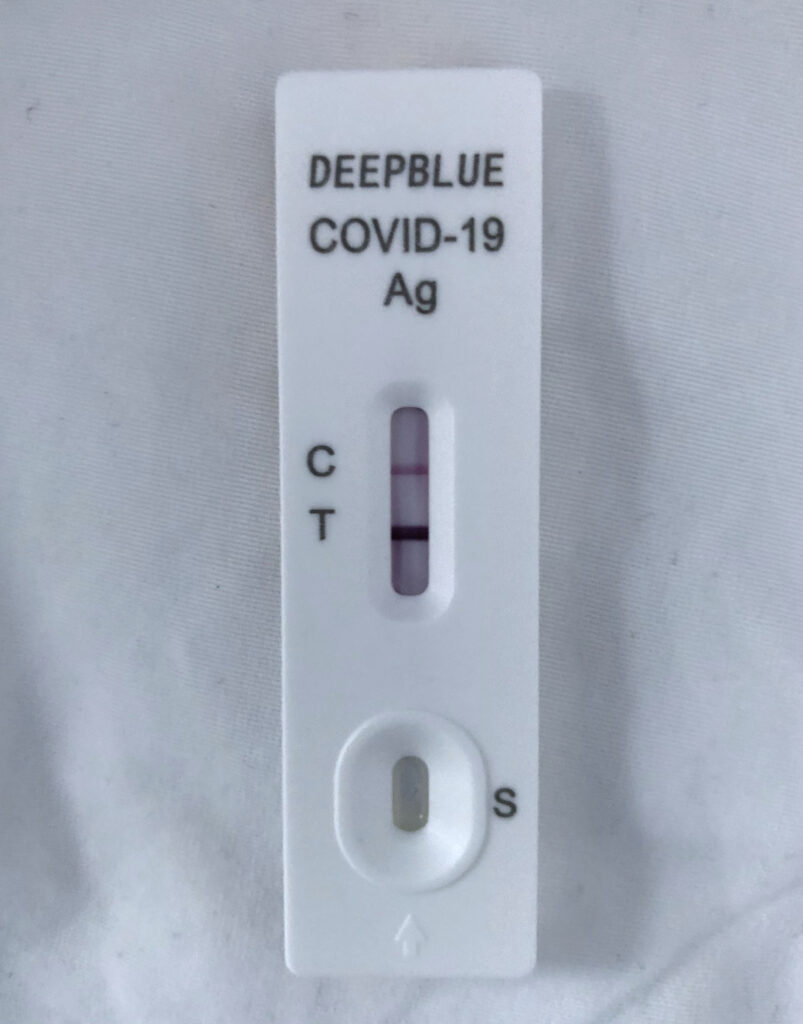 Recently, I caught Covid-19. Not a unique story these days, but I’d dodged it until last month. Vaccinated five times and an avid mask wearer, I’d been hyper-careful. I was nervous last year when I started to go to author events, either to speak or take part. I was a rare person at the London Book Fair who actually wore a mask all day, every day. I reckoned that thousands of people from every corner of the world were a hazard. Sadly, several colleagues reported later they had contracted Covid there. Recently, I caught Covid-19. Not a unique story these days, but I’d dodged it until last month. Vaccinated five times and an avid mask wearer, I’d been hyper-careful. I was nervous last year when I started to go to author events, either to speak or take part. I was a rare person at the London Book Fair who actually wore a mask all day, every day. I reckoned that thousands of people from every corner of the world were a hazard. Sadly, several colleagues reported later they had contracted Covid there.
Colour me Mrs Smug.
I wore the mask on planes, trains and buses. If there was a crowd, I whipped out a faithful FFP2. I habitually boarded as near to last as possible on planes and still tended to keep distance from others even this year.
I don’t do well with respiratory illnesses and I REALLY did not want this virus.
But, vaccinated and accepting that infections were at now at rock bottom, I’ve been travelling all over the place this year – UK, Ireland, Slovenia, Austria – through many different airports, including Paris CDG and the ever delightful Stansted, and on many trains. I’ve spent time at events, talking to hundreds of people, eating in pubs and restaurants with colleagues and friends, all bare-faced. Not a sniffle.
Airlines are good at ventilation and I always felt safe travelling maskless this year. I’ve traced last month’s disaster to the airline coach. Fabulous. The ‘bad cold’ became truly vile. I couldn’t remember feeling so ill. I took a test. Yep. Two lines.
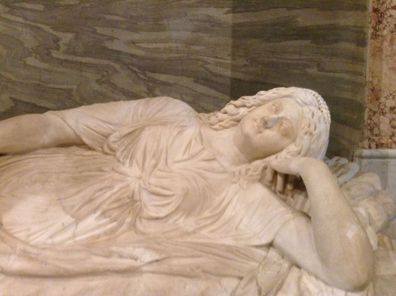
I was positive for 12 days. I had to mask up in my own house but by Day 7, I was ‘walking wounded’ and could get about. Luckily, my husband went away on a pre-arranged trip one day later. I can’t imagine how people coped when infected and non-infected people had to lived in the same place for days, even weeks on end.
If I hadn’t been well-vaccinated, I would have been seriously ill. I swallowed pills, drank a lot of honey water and tea, and rested. We know how bugs transmit, we have showers, washing machines, sterilising gels and medical services for extreme illness.
Consider the plagues of history
The Black Death 1347-53 killed between 75–200 million people. Nobody was counting at the time, but Lawton and Wilson (ed.) outlined this estimate in the New Scientist in May 2022.
The Spanish flu 1918-20, when nearly a third of the global population, or an estimated 500 million people were infected in four successive waves. Estimates of deaths range from 17 million to 50 million (Centers for Disease Control and Prevention, December 2019).
The Antonine Plague, which hit the Roman Empire in AD 165 and had by AD 180 killed thirty percent of the population. The results were catastrophic:
- it decimated (reduced by 1 in 10) the Roman Army, by now heavily consisting of non-Italians and struggling against barbarians in the north and Persians in the east
- it cut a naturally dwindling population by a third, wiping out whole villages, even towns
- it shrank the labour force
- it diminished the reliability of transport links
- it weakened trade, so wrecking the whole economy
- it promoted increasing religious fervour which split Romans from their traditional martial and pragmatic values
- and all these combined to reinforce social disintegration.
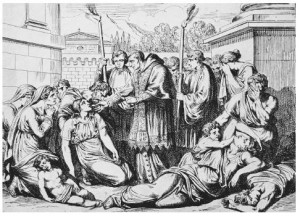
Luckily, in the 21st century, we had cushions in the form of employment furlough, a ground-breaking scientific research community, dedicated hospital and medical services with emergency plans, a world health organisation coordinating the fight and relentless determination to research, adapt and find ways to bring people through. After the initial panic and selfish behaviour by some political actors, capitalism was harnessed to produce protective equipment and vaccines on a worldwide scale,
There were heartbreaking stories – separation, dying isolated, mothers giving birth in masks, domestic violence increases through enforced confinement of lockdown, bad tempers, fake news and fear. But the vast majority of ordinary people behaved extremely well, taking the recommended precautions and supporting the less able members of their communities.
I’m not entirely sure we’ve recovered our habits of social interaction yet. Here in France, many people no longer double kiss each other; sometimes, they don’t even shake hands. This is very strange for a usually very social people. The next vaccination campaign has started and if I hadn’t had the virus, I would have been first in the queue. Apparently, I have gained several months of good natural immunity. Personally, I would have preferred a jab. Now I’m counting off the months when I will be able to have my booster.
But how many people have died worldwide from Covid-19 in comparison with historical plagues?
Tricky question. The World Health Organisation reports figures of in excess of 3.3 million, but with some significant provisos, the most important of which is their certainty of under-reporting. The capacity of health information systems varies widely; the percentage of registered deaths ranged from 98% in the European region to only 10% in the African region. Countries also use different processes to test and report, but most use excess deaths over normal expected deaths in non-pandemic years.
We should also consider that in the past figures are not solid. For instance, we only know about some parts of the world. Cassius Dio only considered the Antonine Plague as it affected the Roman Empire and areas immediately bordering it. Communication even by the fastest courier was slow across such a vast area, even if such a courier survived the journey.
Vile as the experience was, I am so pleased to have been living in 2023 when I was infected by my generation’s plague, and not in 180 AD.
Alison Morton is the author of Roma Nova thrillers – INCEPTIO, CARINA (novella), PERFIDITAS, SUCCESSIO, AURELIA, NEXUS (novella), INSURRECTIO and RETALIO, and ROMA NOVA EXTRA, a collection of short stories. Audiobooks are available for four of the series.Double Identity, a contemporary conspiracy, starts a new series of thrillers. JULIA PRIMA, a new Roma Nova story set in the late 4th century, is now out.
Find out more about Roma Nova, its origins, stories and heroines and taste world the latest contemporary thriller Double Identity… Download ‘Welcome to Alison Morton’s Thriller Worlds’, a FREE eBook, as a thank you gift when you sign up to Alison’s monthly email update. You’ll also be among the first to know about news and book progress before everybody else, and take part in giveaways.
If you enjoyed this post, do share it with your friends!Like this:Like Loading...
|
Subscribe to Blog via Email
Join 368 other subscribers.
Categories
Archive
|
 I’m delighted to welcome Annie Whitehead to the blog to talk about being in Exile. She’s a prize-winning writer, historian, and elected Fellow of the Royal Historical Society, and has written four award-winning novels set in ‘Anglo-Saxon’ Mercia, including To Be A Queen, the story of Æthelflæd, Lady of the Mercians.
I’m delighted to welcome Annie Whitehead to the blog to talk about being in Exile. She’s a prize-winning writer, historian, and elected Fellow of the Royal Historical Society, and has written four award-winning novels set in ‘Anglo-Saxon’ Mercia, including To Be A Queen, the story of Æthelflæd, Lady of the Mercians. Many Anglo-Saxon kings are familiar. Æthelred the Unready is one, yet less is written of his wife, who was consort of two kings and championed one of her sons over the others, or his mother who was an anointed queen and powerful regent, but was also accused of witchcraft and regicide. A royal abbess educated five bishops and was instrumental in deciding the date of Easter; another took on the might of Canterbury and Rome and was accused by the monks of fratricide.
Many Anglo-Saxon kings are familiar. Æthelred the Unready is one, yet less is written of his wife, who was consort of two kings and championed one of her sons over the others, or his mother who was an anointed queen and powerful regent, but was also accused of witchcraft and regicide. A royal abbess educated five bishops and was instrumental in deciding the date of Easter; another took on the might of Canterbury and Rome and was accused by the monks of fratricide. One family, two kingdoms, one common enemy …
One family, two kingdoms, one common enemy …









